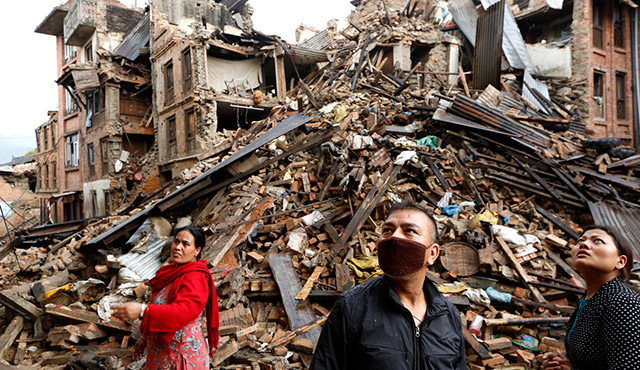Seldom has an entire nation suffered so much from the effects of a single earthquake as much as Nepal.
The 7.8 magnitude temblor that struck the country on April 25, and the aftershocks that followed—including a second 7.3 magnitude quake on May 12—killed more than 8,600 people and injured more than 19,000. Entire villages were devastated and hundreds of thousands of people were instantly homeless. The most severely affected were those living in poor communities.
More than a month after the quake, many areas in Nepal continue to be scenes of devastation. In some areas, 90 percent of the structures have been destroyed, including hospitals and health centers, leaving many with no access to even the most basic health care. Many structures that were damaged in the first earthquake were flattened by the second. And in a few weeks the monsoon season will begin, making it impossible for people to live outdoors.
In a report titled “Devastated but not Defeated,” Father Prakash Louis, S.J., writing from the capital of Kathmandu, offers a statistical snapshot of the current situation in slowly recovering Nepal:
General Facts
Size of population: 26.7 million (as of 2011)
Major religions: Hinduism, Buddhism
Life expectancy: 67 years (men), 69 years (women)
Main exports: Carpets, clothing, leather goods, jute goods, grain
Occupations: Agriculture (81 percent), Industry (3 percent), Service (11 percent), Other (5 percent)
U.N. estimate of people living below poverty: 40 percent
Effects of April 25 Earthquake
Dead: More than 8,600
Injured: More than 19,000
Home destroyed: More than 1.6 million
Homes partially damaged: More than 1.4 million
Offices and schools destroyed: More than 10,400
Offices and schools partially damaged: More than 14,200
Value of crops and livestock destroyed: $3.58 billion
Major Challenges
Health care services. Complications during and after childbirth are among the main causes of mortality and disability for women.
Debris management. Required to enable continued search and rescue and humanitarian relief operations. Restoring community infrastructure to deliver public services also is essential.
Transportation and communication. Main roads are open, but landslides have affected relief efforts in some areas. Many villages are without road access at all.
Government. Many local government personnel have not reported for duty.
Key Priority
Shelter. The number of displaced people continues to increase. Most are living next to their damaged houses.
Catholic Relief Efforts
Catholic Relief Services has committed a minimum of $10 million to Nepal and plans to reach 15,000 families (75,000 people) with emergency relief in the next few weeks and continue for years in assisting rebuilding efforts.
To Donate
Go to crs.org.

